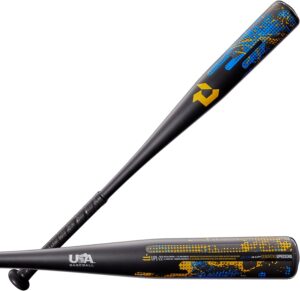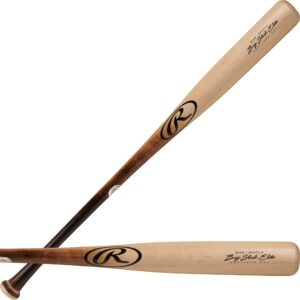For over a century, baseball has been one of America’s favorite pastimes and it’s still going strong today! While the rules and the way the game is played have changed over the years, one thing that hasn’t changed is the bat. The baseball bat has evolved over the years, from the early hollow hickories to the modern alloy bats that are available today. So let’s take a look at the fascinating evolution of the baseball bat and how it has impacted the game.
We’ll start by looking at the first types of bats that were used in the early 1800s and how they evolved over the years. We’ll also learn about the different types of materials that are used to make modern bats, and what makes each one unique. Finally, we’ll explore how technology has been used to make bats that hit the ball farther while being lighter and more durable. So grab your peanuts and cracker jacks, and let’s take a deep dive into the fascinating evolution of the baseball bat!
Since its inception, baseball has been synonymous with one defining tool – the bat. Over the years, it has seen many iterations from a variety of materials and designs. In this article, we’ll trace the evolution of the baseball bat, from its origin until today.
Origins of the Baseball Bat
Early Varieties
When baseball emerged in the early 19th century, bats were used in much the same way as other similar sports. They were often made of a single piece of wood, such as hickory or ash. Some players even carved their own bats according to their preferences. As scientific advances allowed for better understanding of aerodynamic principles, design improvements were made to reduce drag and optimize bat speed.
Early Inspiration
Although wooden bats had been used in other sports, some believe the idea for a barrel-based design was inspired by cricket equipment. Cricket bats are still round or slightly oval-shaped and are crafted from willow wood. These elements were adopted to give baseball players an advantage when striking a ball with power.
Modern Baseball Bat Design
Materials
Nowadays, when searching for the best baseball bats, you can choose from aluminum or composite materials with more traditional wooden varieties typically reserved for competitions that enforce strict regulations on bat materials and construction methods. The most common materials used to craft modern baseball bats are aluminum and composite materials like graphite fibers and carbon fiber composites which are reinforced with resin glue.
Regulations
The use of metal bats is now heavily regulated by organizations such as Little League Baseball which have specific rules governing the use and design of metal bats in youth leagues and tournaments. Common restrictions involve weight limits, overall length dimensions, barrel diameter settings, spring-like effect testing (which measures how much energy is absorbed by a bat on impact). Of course, all approved bats must also pass local safety standards set by organizations such as the Consumer Product Safety Commission (CPSC).
Unique Methodologies
In addition to conventional manufacturing techniques, some bat designers rely on technologies such as 3D printing or automated lathe machines to craft their own creations according to their specific requirements or preferences. Some people have even explored new materials such as metal alloys or Kevlar to create stiffer but lighter bats that allow the player to generate more power with less effort.
The Impact of Technology
Computer-Aided Design
The development of CAD software has had a profound impact on the evolution of baseball bats over recent decades as firms now have access to powerful design tools that allow them to create intricate designs that maximize performance based on hundreds of variables. Thanks to CAD programs, engineers can now identify potential flaws or weaknesses in their designs before they begin manufacture saving both time and money in the process.
Statistical Analysis
Today’s sophisticated software packages provide detailed analytics and reporting tools that enable firms to examine trends and patterns within an enormous data pool comprised of hundreds if not thousands of games across multiple levels such as professional or amateur leagues or even high school games across different cities or regions throughout the country. This information is priceless for designers since it allows them to make improvements to their goods right away instead of going through a lengthy (and expensive) trial-and-error process.
Experimentation
When it comes to making high-quality baseball bats, the line between technology and handiwork often blurs. This is because some engineers prefer to use more traditional methods, such as heat-treating, which involves heating up some areas of the bat before they cool down while leaving other parts untouched. This creates a two-tone look on the surface that makes each bat look different.
Thanks in large part to the innovations in materials science and manufacturing techniques made possible by modern technology, baseball bats have come a long way in a relatively short amount of time, allowing players of all ages to enjoy the national pastime without worrying about the health risks associated with using antiquated equipment.
Conclusion
The baseball bat has come a long way since its inception in the 1800s. From the hollow hickories of the early days to the modern alloy bats of today, the evolution of the baseball bat has been a fascinating journey. New materials, innovative designs, and technological advancements have made the bat lighter, stronger, and more durable. This has allowed for players to hit the ball farther and with more accuracy, changing the game of baseball.
While the bat has seen many changes and advances over the years, the goal of the game has remained the same to hit the ball out of the park. Whether it’s a wooden bat, an aluminum bat, or a composite bat, the essence of the game is still the same. So grab your bat and get out there and swing for the fences!
Other Best Product Reviews
- Best Pencils for Drawing
- Best Football Helmet For 2023
- Best lineman Cleats
- The Best Conditioner for Poodles 2023
- Best Disc Golf Shoes in 2023
- The Best Horse Feed
- Best Basketball Shoes for Wide Feet
- Best Soccer Cleats
- Best Baseball Gloves of 2023
- Best Football Gloves
- The Best Digital Pianos
- Best Espresso Machines Under $200
- Best Stroller Fan
- The Best Colored Pencils
- The Best Toothpaste for Bad Breath
- The Best Clippers for Fades
- The 7 Best Adhesive Remover in 2023
- Best Polyurethane
- Best Dog Clippers
- Best Golf Balls
- Best Baseball Bats
- Best Caulk for Showers
- Best Caulk Gun
- Best Pickleball Paddles 2023
- Best Versace Cologne
- Best Snowmobile Helmet
- Best Summer Colognes For Men
- Best Seiko Watches For Men
- Best Tattoo Ink
- Best Beard Balm
- Best Volleyball Knee Pads
- Vivaia Shoes Reviews
- Best Volleyball shoes
- Best Toothpaste for gums
- best football cleats for wide feet
- Locksmith Pasadena MD ServLeader
- best Hoka shoes for nurses
- Best Steel Toe Boots


